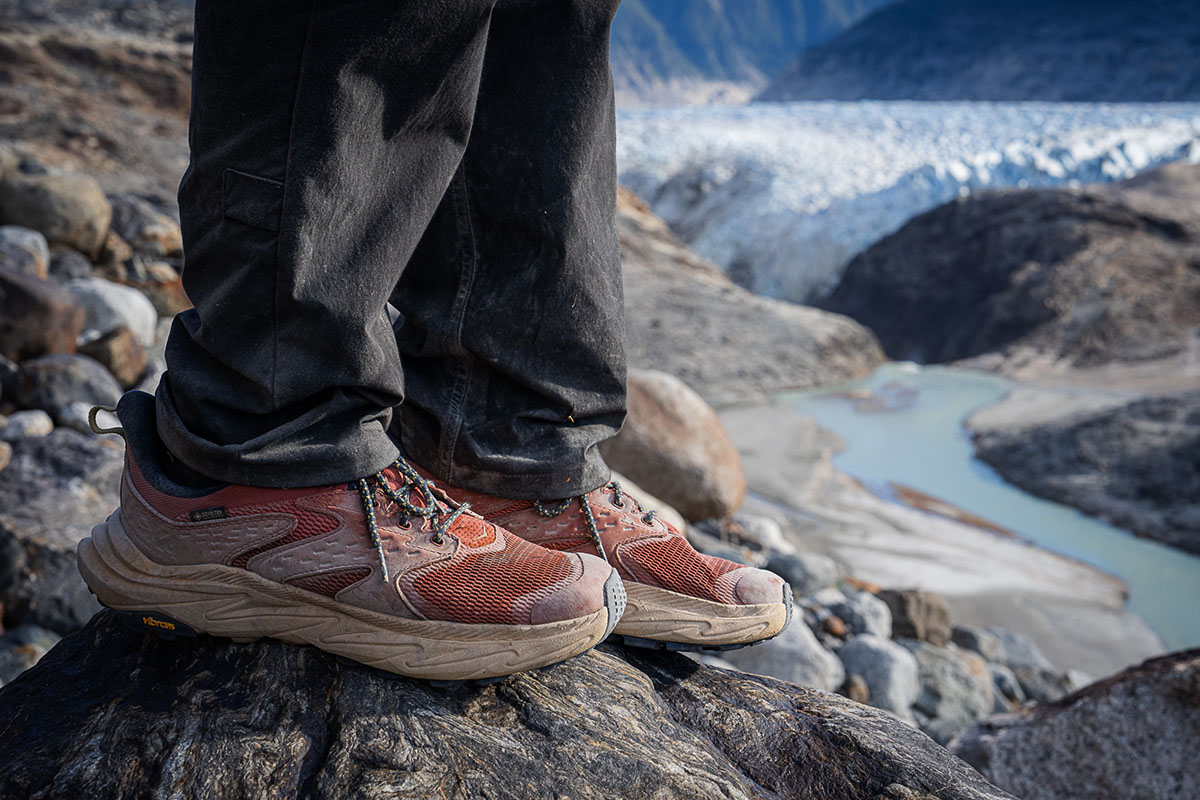
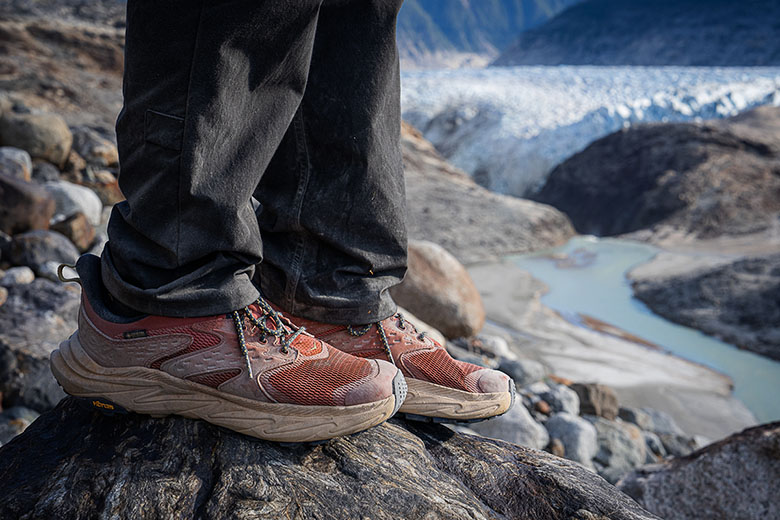
Price: $180
Weight: 1 lb. 14.6 oz. (men’s)
Waterproof: Yes (Gore-Tex)
What we like: Plush comfort, trustworthy grip, and solid stability and protection for a hiking shoe.
What we don’t: Fit runs big and the imprecise lacing system and wide base limit the shoes’ capabilities on technical terrain.
See the Men's Anacapa 2 Low GTX See the Women's Anacapa 2 Low GTX
Hoka is best known for their road and trail running shoes, but they’ve made a big push into the hiking space over the past several years. Now in its second iteration, the Anacapa is a real winner for those who stick to established trails and prioritize cushy comfort. We recently took the updated design to Chilean Patagonia for testing, where it excelled on a 50-mile backpacking trip that pushed the shoes well beyond their intended use. The wide base and hard-to-secure lacing system do limit precision on technical terrain, but overall, the Anacapa 2 is a very capable, comfortable, and well-built design. Below we break down the Anacapa 2’s all-around performance. To see how it stacks up to the competition, check out our article on the best hiking shoes.
Hoka is known for their generously cushioned designs and comfort-first approach, and the Anacapa 2 Low GTX carries the torch. While not the plushest option the brand offers (its “balanced” cushion designation lands right in the middle of Hoka’s padding scale), the shoe is extremely comfortable to wear all day. Another contributor to the shoes’ comfort-factor is its light and nimble feel, which helped me stay reasonably fresh on long days over rough and varied terrain. They did require a short break-in period, but after a few miles the shoes were flexible and comfortable enough to cover long distances quickly—and they’ve remained that way since.
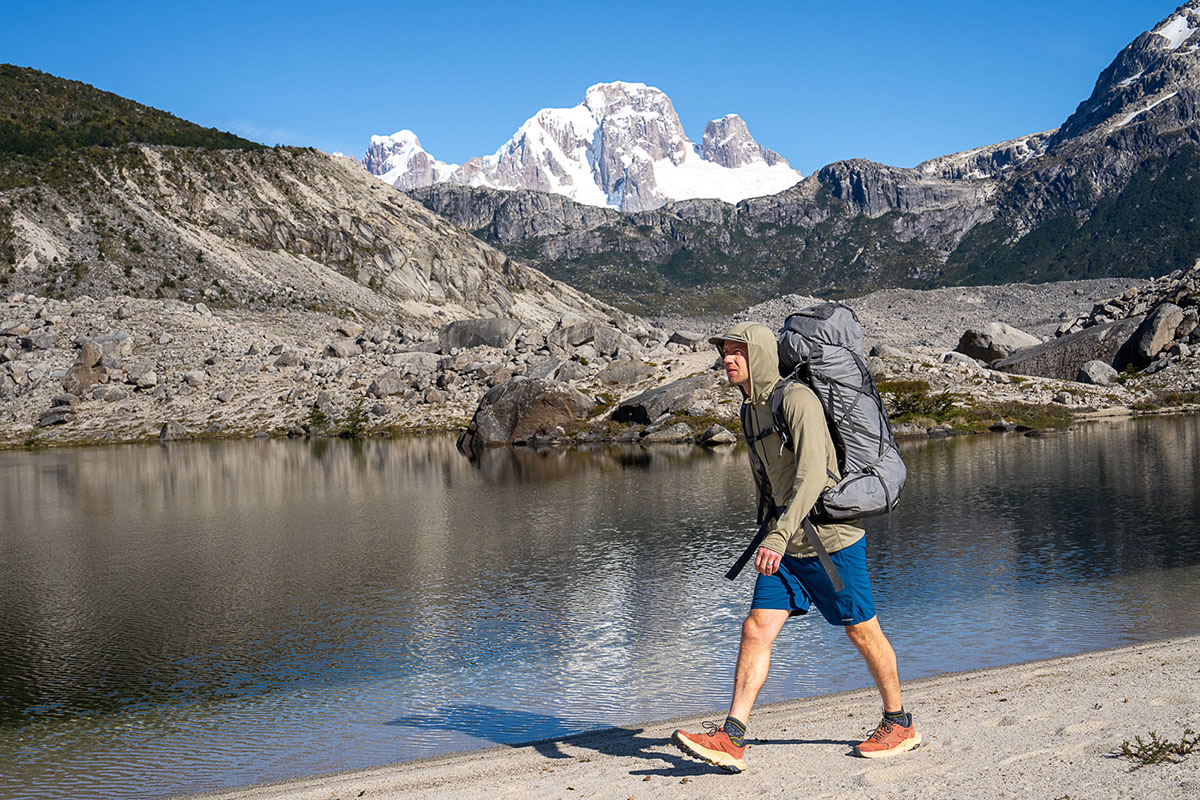
That said, I did come away with some comfort-related complaints. First, the shoes’ wider base isn’t completely natural and took some getting used to—I found myself needing to calibrate and aim for a precise spot during rocky creek crossings and when creeping along narrow glacier spines (both of which were admittedly pushing the shoes’ limits). The lacing system wasn’t my favorite, either: The rounded laces are difficult to tie securely, and it often took a few tries to feel like I had a snug-enough fit for navigating technical terrain. Added up, it’s not the kind of shoe that feels like an extension of your body. But if the classic Hoka feel is what you’re after, the Anacapa is a very comfortable option.
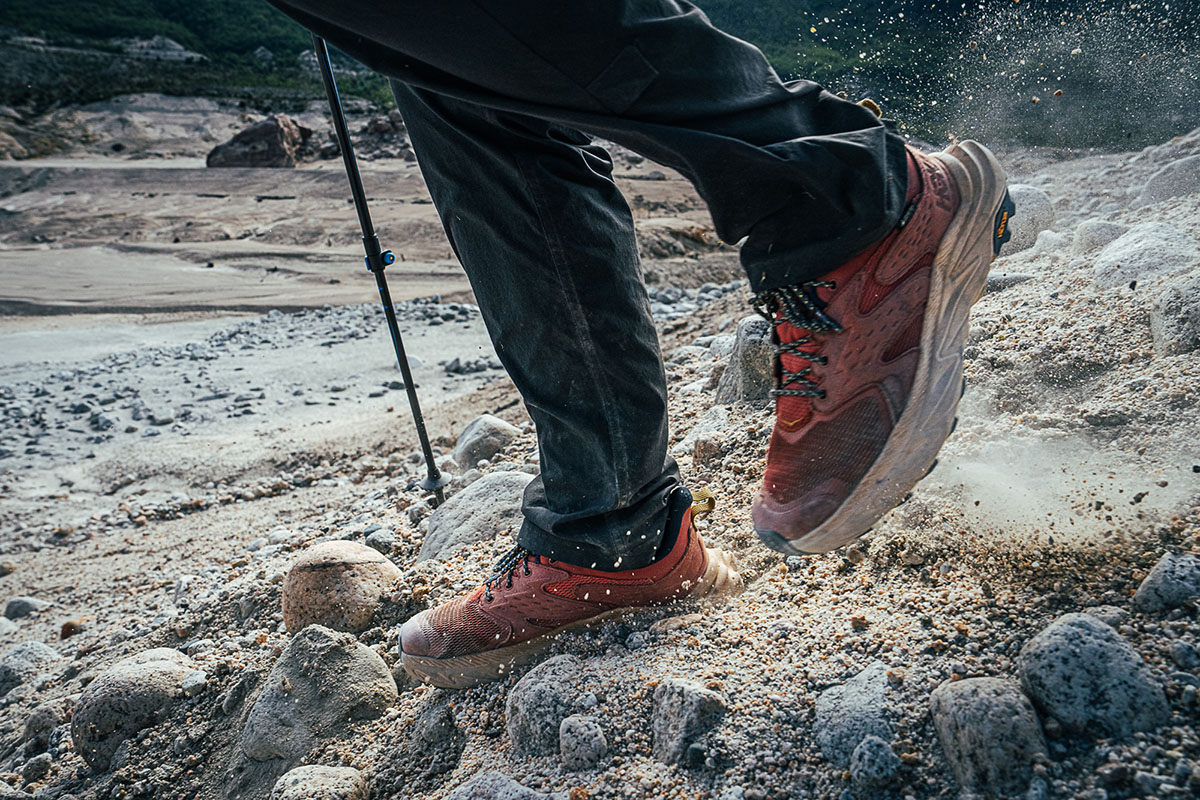
At 1 pound 14.6 ounces per pair for the men’s version, the Hoka Anacapa 2 Low GTX isn’t the lightest hiking shoe available, but it still has a noticeably nimble and fast-moving personality. For comparison, you can shave significant weight by opting for a true trail runner like Hoka’s own Speedgoat 5 (1 lb. 4.6 oz.), but the Anacapa stacks up decently well to similarly intentioned hiking shoes like Salomon’s X Ultra 4 GTX (1 lb. 11.5 oz.) and Merrell’s Moab Speed 2 GTX (1 lb. 8.7 oz.). As I touched on above, the shoes did take a little while to break in, but after that, I really enjoyed the sprightly and energetic feel—great for long days on the trail that involved a lot of rock- and creek-hopping.
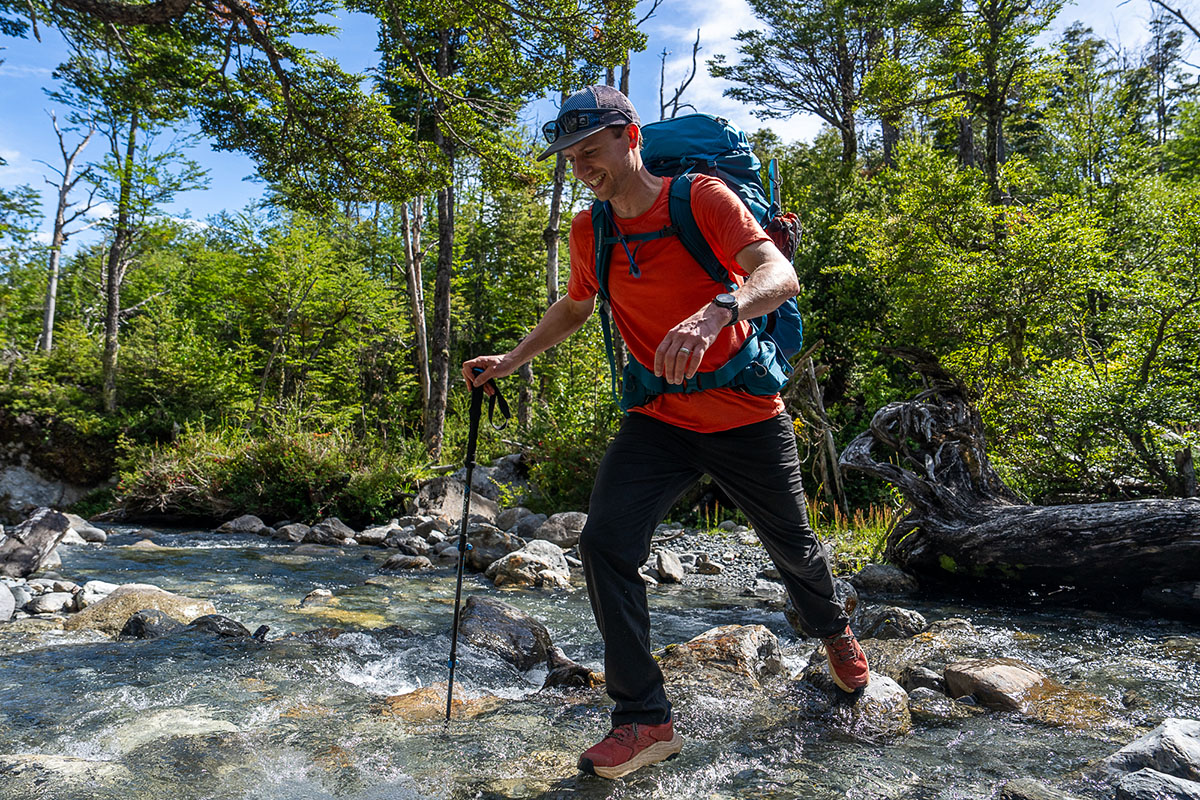
With a premium Vibram Megagrip outsole, the Anacapa 2 Low GTX proved to be very trustworthy over all sorts of terrain. For reference, we covered the whole gamut on our five-day backpacking trip—from loose dirt to snow, ice, and mud—and the Anacapa showed no signs of weakness. It also offered solid heel braking on the downhills, allowing me to confidently navigate steep sections of trail. There is a large patch of blown rubber along the middle of the outsole that strikes me as susceptible to breaking down over time (especially if you frequent rocky trails), but I’ve had no issues thus far, and the undersides of both shoes are in excellent shape after considerable use.
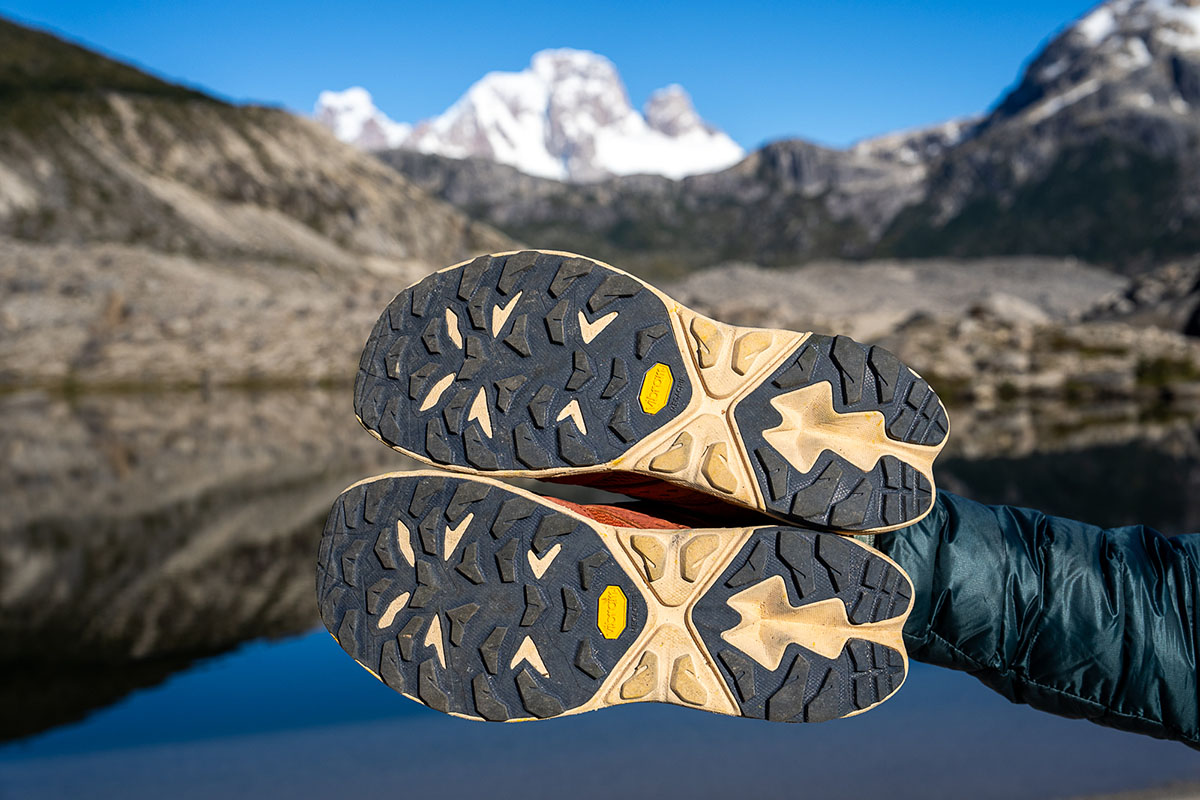
The Anacapa offers ample support for on-trail use, even when carrying a full backpacking pack. I admittedly pushed the shoes’ limits during testing: Our five-day trek involved technical glacier travel, lots of side-hilling, and several steep and loose descents—all while shuttling a fully loaded, 70-liter pack. Impressively, I only found myself wishing for a more substantial hiking boot on the glacier. The shoes do offer moderate lateral support, but they flexed too heavily to feel reliable when navigating steep and consequential sections of mixed ice and gravel. But again, the Anacapa is plenty of shoe for most on-trail outings, and the shoes offer far better support and stability than true trail runners and many running-inspired hiking shoes.
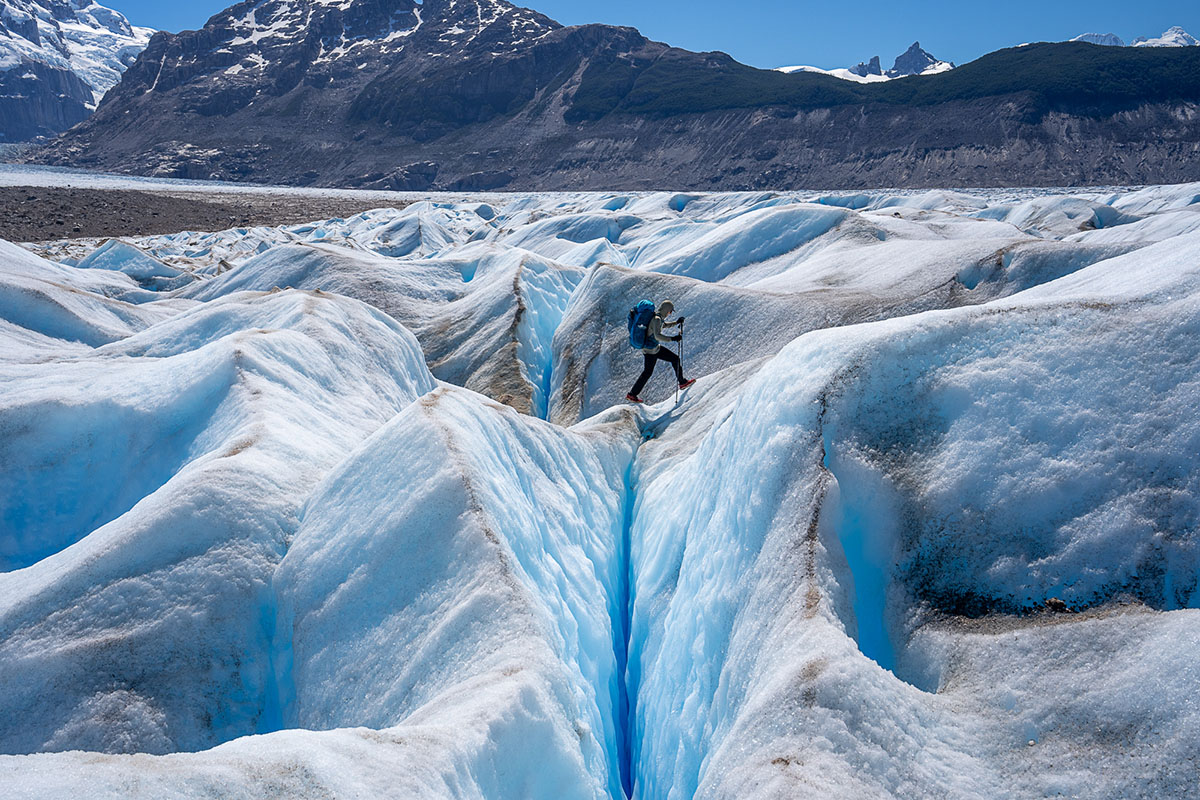
As its name suggests, the Anacapa 2 Low GTX boasts a proven Gore-Tex membrane for sealing out water. In testing, the shoes performed as advertised, which was highly appreciated in boggy conditions, during low creek crossings, and when walking through wet vegetation—all of which were fairly common on our five-day trek. The shoes did get soaked a couple of times during water crossings that were too high for the low collar, although any hiking shoe would have suffered the same fate (and Hoka does offer a mid-height GTX version for $15 more). On the bright side, the shoes dried out impressively quickly thanks to their mesh-heavy uppers and the fact that we were hiking in warm, sunny weather.
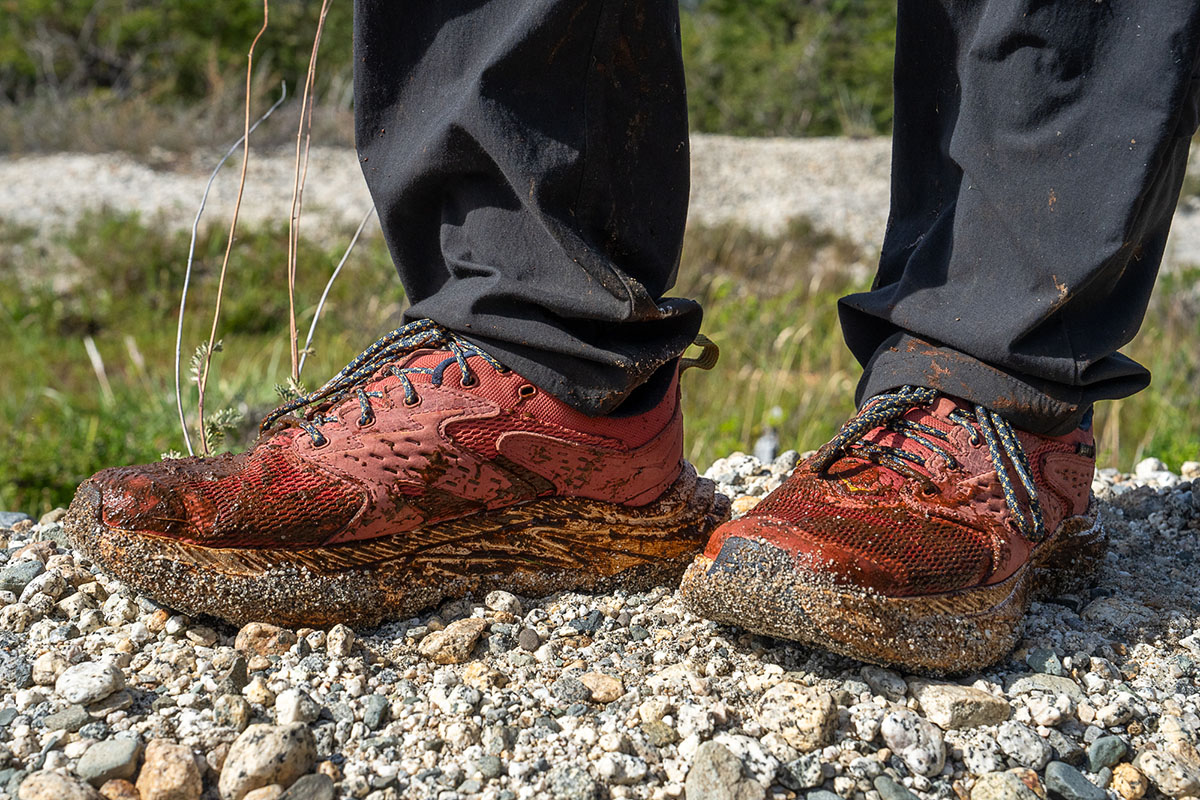
In addition to drying out quicker than many waterproof hiking shoes we’ve tested, the Anacapa is also a respectable breather. I did experience sweaty feet during all-day outings in the mid-summer heat (temperatures reached into the 80s Fahrenheit), but it wasn’t excessive, and the interior was completely dry each morning. That said, if you spend a lot of time in hot and dry climates, it may be worth saving with the Anacapa Breeze Low ($155), which forgoes the Gore-Tex membrane.
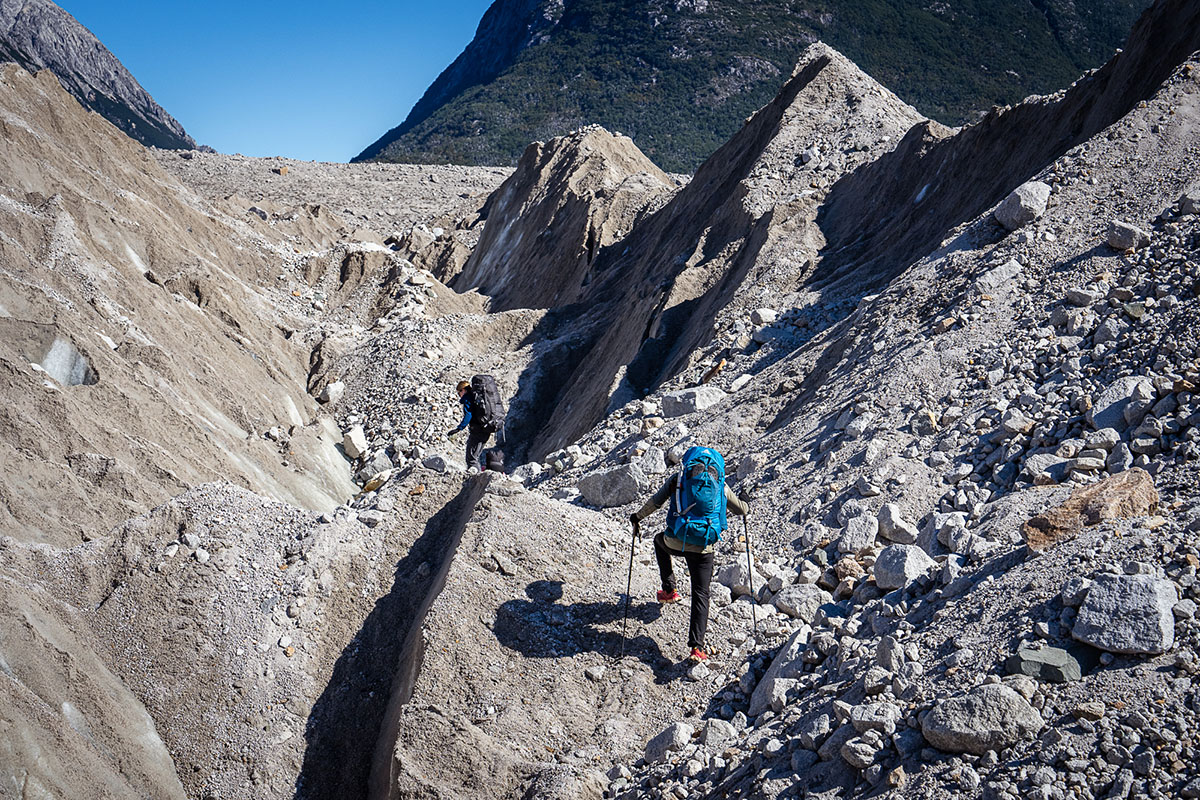
Put simply, the Anacapa punches well above its weight when it comes to keeping your feet safe from rocks, roots, and anything else the trail might throw its way. Toe protection is especially stout for a lightweight hiking shoe—the rubber bumper at the front took countless direct hits without any noticeable pain. The upper is also fairly burly with a mix of nubuck leather and tightly woven mesh and provided a nice barrier against abrasive brush, sharp rocks, and other obstacles on our 50-mile trek. Those looking for added ankle support and coverage can step up to one of the mid-height models (either waterproof or non-waterproof), but the low-top Anacapa is plenty protective for most on-trail outings.
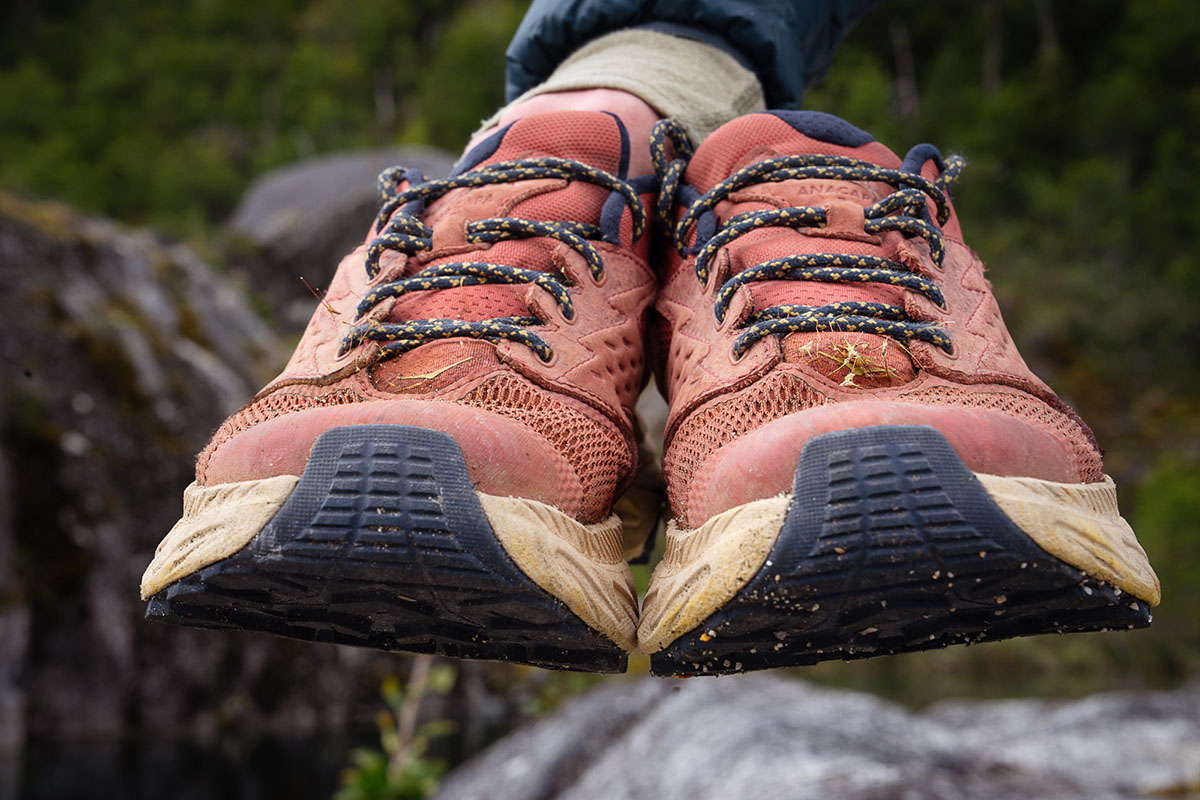
Hoka is a leading footwear brand with an extensive selection of well-built shoes to their name, and the Anacapa is no exception. As I mentioned previously, the leather/mesh upper is substantial and has withstood countless hours of bushwhacking and technical travel (including over snow and ice) with minimal wear to show for it. The Vibram sole is also fairly beefy and holding up well, although the patch of blown rubber (common among road running shoes) in the middle is more susceptible to breaking down over time than the rest of the outsole. But all in all, I feel Hoka made smart decisions when it comes to balancing weight and durability, and the shoes should have a very healthy lifespan—especially if you stick to maintained trails.
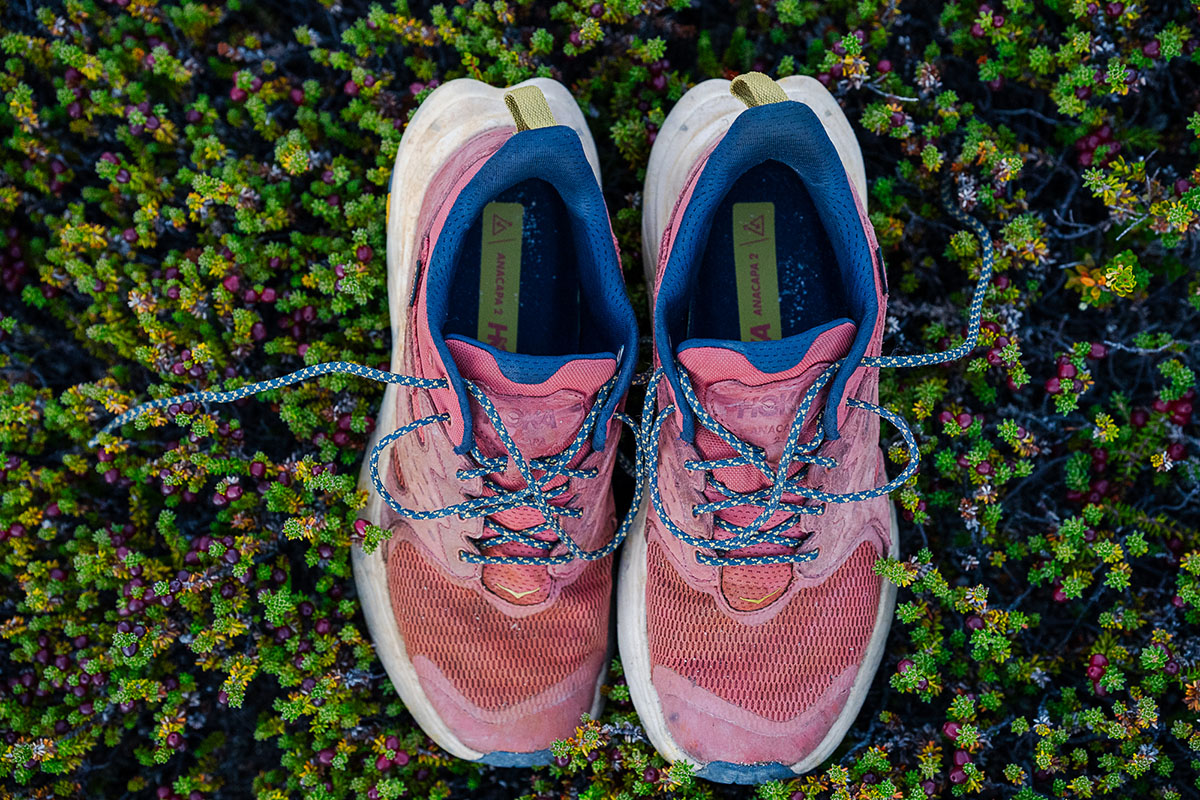
I initially ordered the Anacapa 2 Low GTX in my standard men’s size 9, which proved to be massive. Once I sized down to an 8.5, however, the fit was ideal: The shoes are roomy enough in the toe box to allow for natural swelling throughout the day—I’d categorize them as average-width—but can be snugged down to lock in the heel and avoid unwanted movement. As I touched on above, I did have to tighten the laces a couple times each day, and it often took a few efforts to achieve a secure fit on technical terrain, but it wasn’t a huge issue and didn’t detract too heavily from overall performance. Finally, I would recommend trying the shoes on before you buy, but the fairly extensive sizing selection (from 7 to 15 for men and 5 to 11 for women) means most folks should be able to find a good all-around fit.
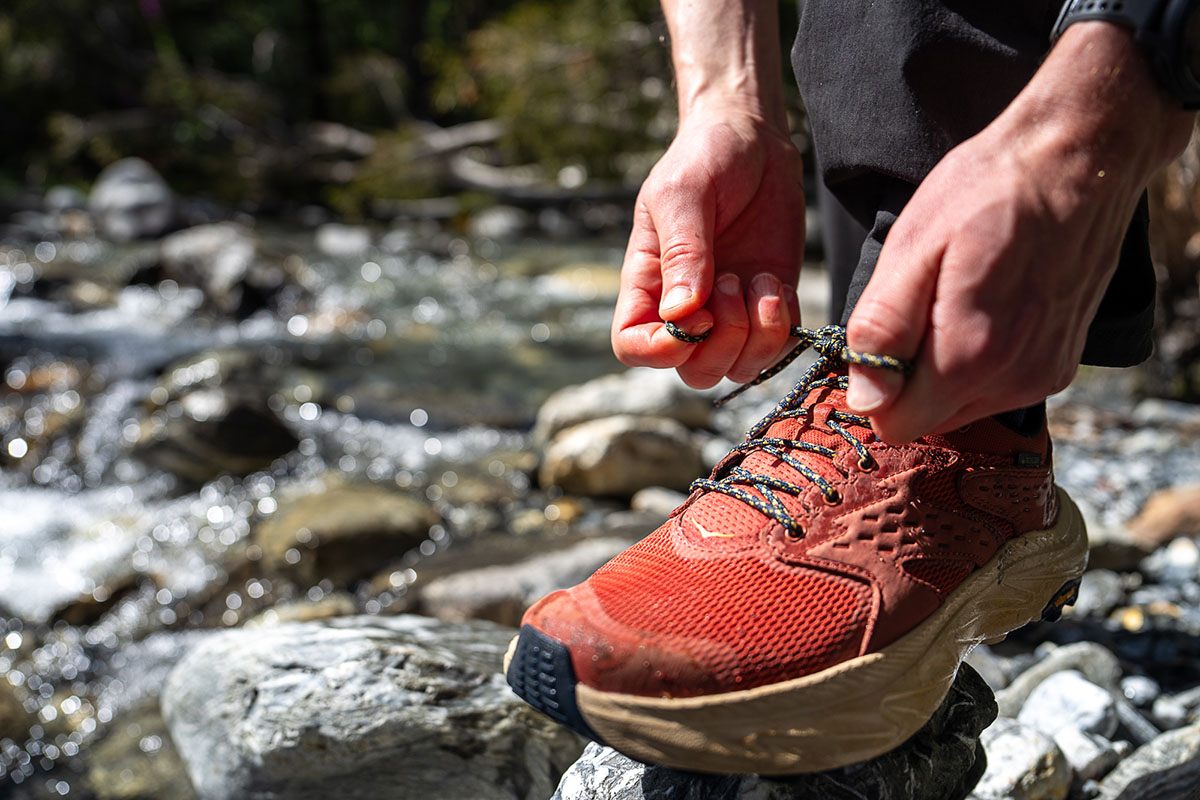
Hoka took no shortcuts on the sustainability front with the Anacapa 2 Low GTX. First, the nubuck leather upper is certified as “gold-rated” by the Leather Working Group—the organization’s top designation that considers the traceability of the hides, energy and water consumption used during production, worker safety, and other measures to help quantify the shoes’ environmental impact. Even bigger picture, the brand is aiming to lower its emissions by about 25% per shoe by 2030. To do that, they’re moving away from petroleum-based products and instead using bio-based alternatives (the Anacapa has a sugarcane-based midsole and a 50% soybean-based liner). Many of the other materials Hoka employed are recycled, from the Gore-Tex Invisible Fit membrane that uses 70%-recycled polyester to the 100%-recycled collar, tongue lining, and laces (excluding the aglets). Added up, it’s a comprehensive effort from the brand and only adds to the Anacapa’s all-around appeal.
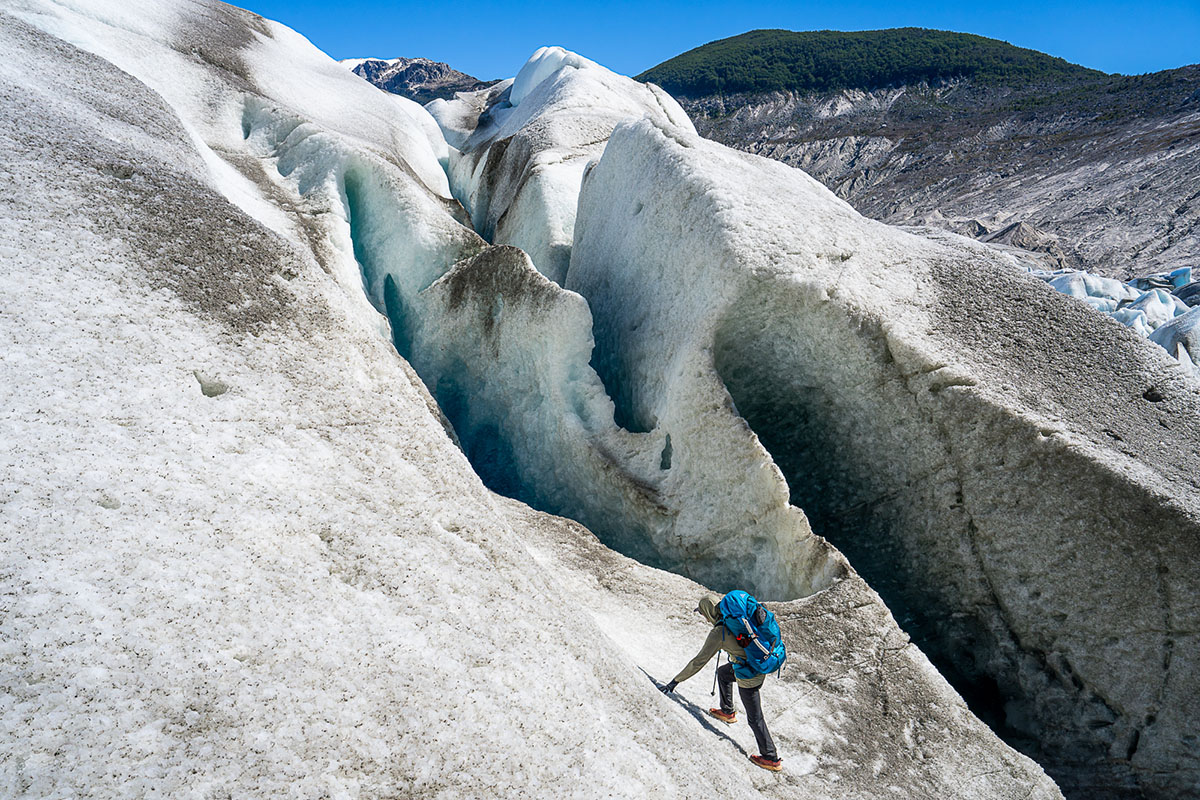
We brought the men’s Anacapa 2 Low GTX to Patagonia for testing, and it’s also sold in a women’s version for the same price. Stacked up against the men’s model, the women’s is a little lighter at 1 pound 8.8 ounces and offered in different colorways, but shares an identical feature set and overall construction. For those who prefer the added support and stability of a hiking boot, Hoka offers the design in a mid-height waterproof version for $195 (see our in-depth review here). Rounding out the collection are two non-waterproof options: the Anacapa Breeze Low ($155; 1 lb. 8.8 oz. per pair for the men’s version) and Anacapa Breeze Mid ($170; 1 lb. 13.2 oz.).
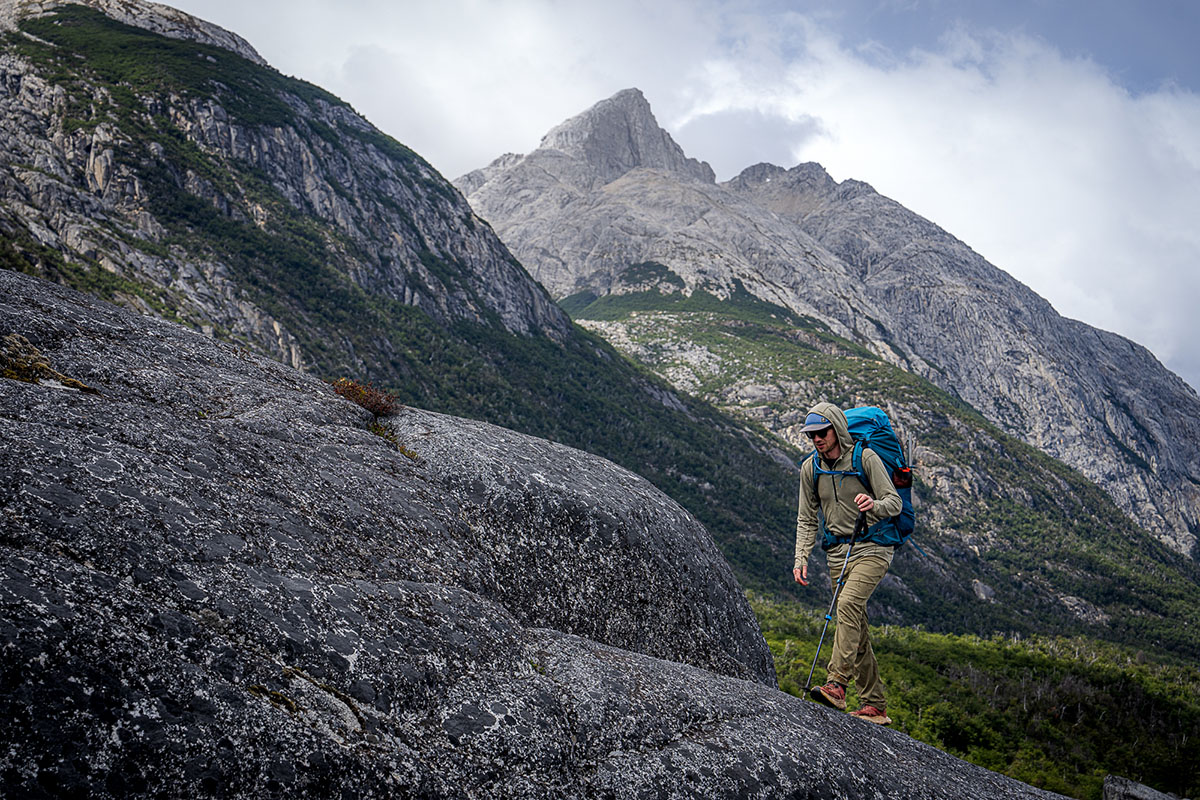
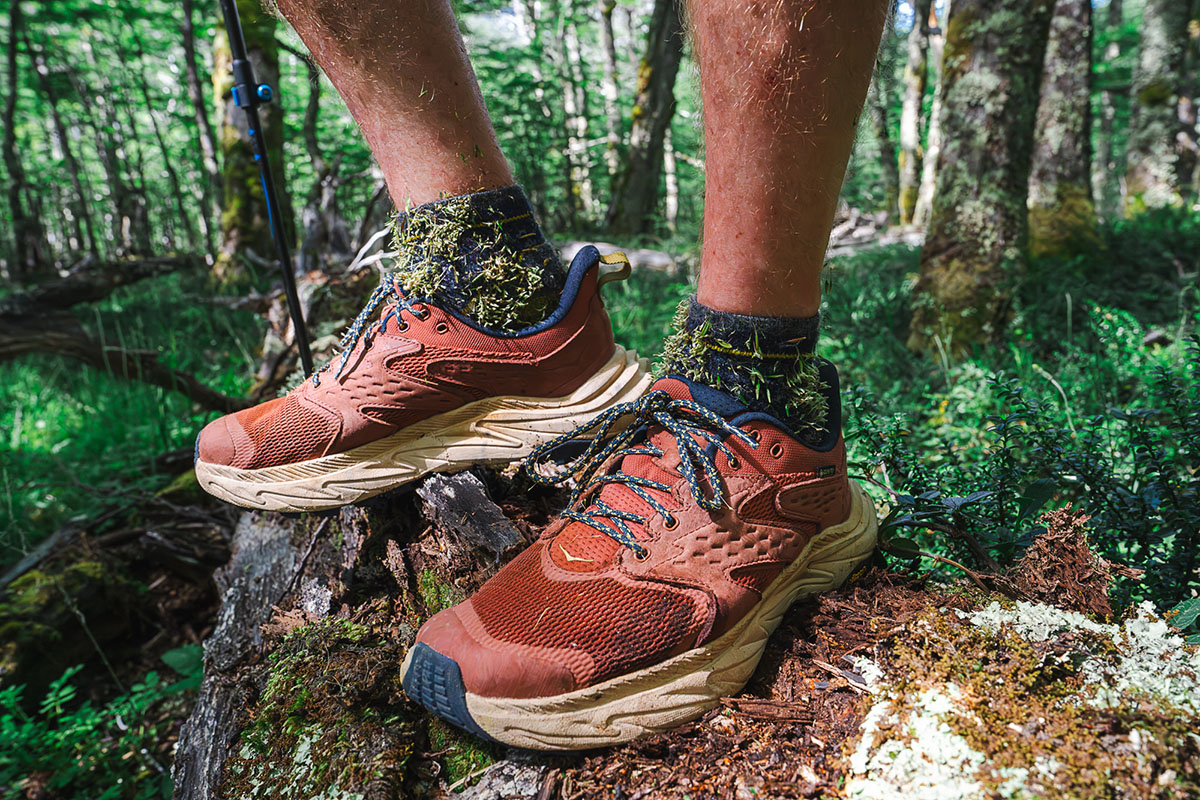
| Shoe | Price | Category | Weight | Waterproof | Upper |
|---|---|---|---|---|---|
| Hoka Anacapa 2 Low GTX | $180 | Hiking shoe | 1 lb. 14.6 oz. | Yes (Gore-Tex) | Nubuck leather/mesh |
| Hoka Speedgoat 5 | $155 | Trail runner | 1 lb. 4.6 oz. | No (available) | Mesh |
| Merrell Moab Speed 2 GTX | $170 | Hiking shoe | 1 lb. 8.7 oz. | Yes (Gore-Tex) | Synthetic/TPU |
| Salomon X Ultra 4 GTX | $160 | Hiking shoe | 1 lb. 9 oz. | Yes (Gore-Tex) | Synthetic |
| Hoka Kaha 2 Low GTX | $220 | Hiking shoe | 2 lb. 1.6 oz. | Yes (Gore-Tex) | Nubuck leather |
Hoka’s Anacapa 2 Low GTX is an impressively comfortable and capable hiking shoe for those who stick to maintained trails. For an even lighter (1 lb. 4.6 oz.) but similarly plush option, Hoka’s own Speedgoat 5 is technically a trail runner but has become very popular among thru-hikers and minimalist backpackers. Like the Anacapa, the Speedgoat has thick but supportive cushioning and a trustworthy Vibram Megagrip sole, making it an excellent option for covering long distances quickly. That said, the Speedgoat’s sole and midsole will wear down much quicker than the Anacapa’s, and the fully mesh upper is more vulnerable to snags and tears. If you spend all of your time on trail and don’t mind a drop in stability, the Speedgoat is a supremely comfortable and well-rounded design. For added durability and more of a traditional hiking shoe feel, it's worth spending up for the Anacapa.
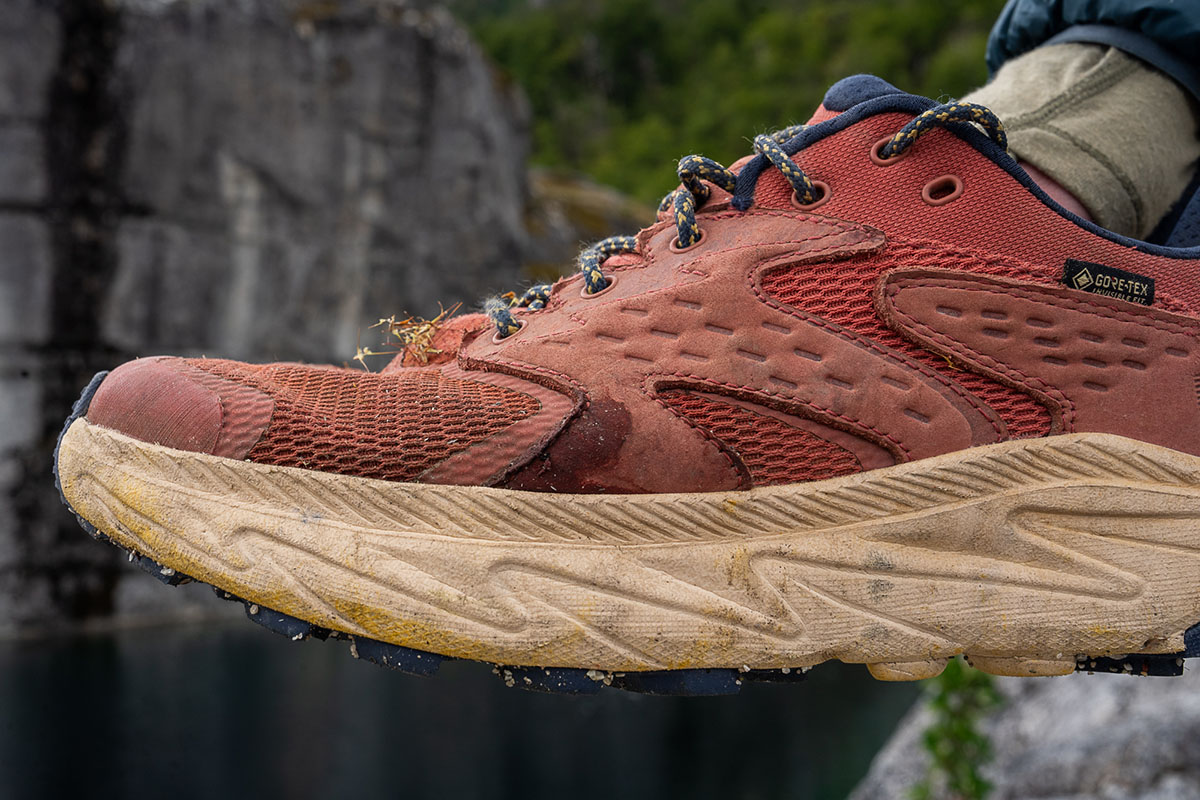
Moving back to the hiking shoe market, Merrell’s Moab Speed 2 GTX is another well-rounded design for on-trail hikers who put a premium on comfort. Like the Anacapa, the Moab Speed offers a healthy amount of protection and support (for a hiking shoe), boasts a reliable Vibram outsole, and is nicely cushioned for long days on the trail—all for around 6 ounces less per pair. However, in testing the women’s version alongside the men’s Anacapa in Patagonia (here's our review), we found the fit to be fairly wide, with no security at the heel for locking it down on steep slopes. Otherwise, it was a great all-around performer for $10 less than the Hoka.
We’d be remiss not to cover Salomon’s X Ultra 4 GTX here, which is our top-rated hiking shoe this season. Now in its fourth iteration, the latest X Ultra retains the fantastic mix of agility, support, durability, and protection that we’ve always loved about the collection. The Salomon is also lighter than the Anacapa at 1 pound 9 ounces while offering enough cushioning underfoot for full days with a loaded pack (although the Anacapa has a plusher feel). The fit is a little polarizing—including a narrow midfoot, spacious forefoot, and hard-to-customize quick-pull lacing system—and the raised collar at the front of the ankle causes discomfort for some. But if you can get a good all-around fit, the X Ultra strikes us as the more capable and versatile option.
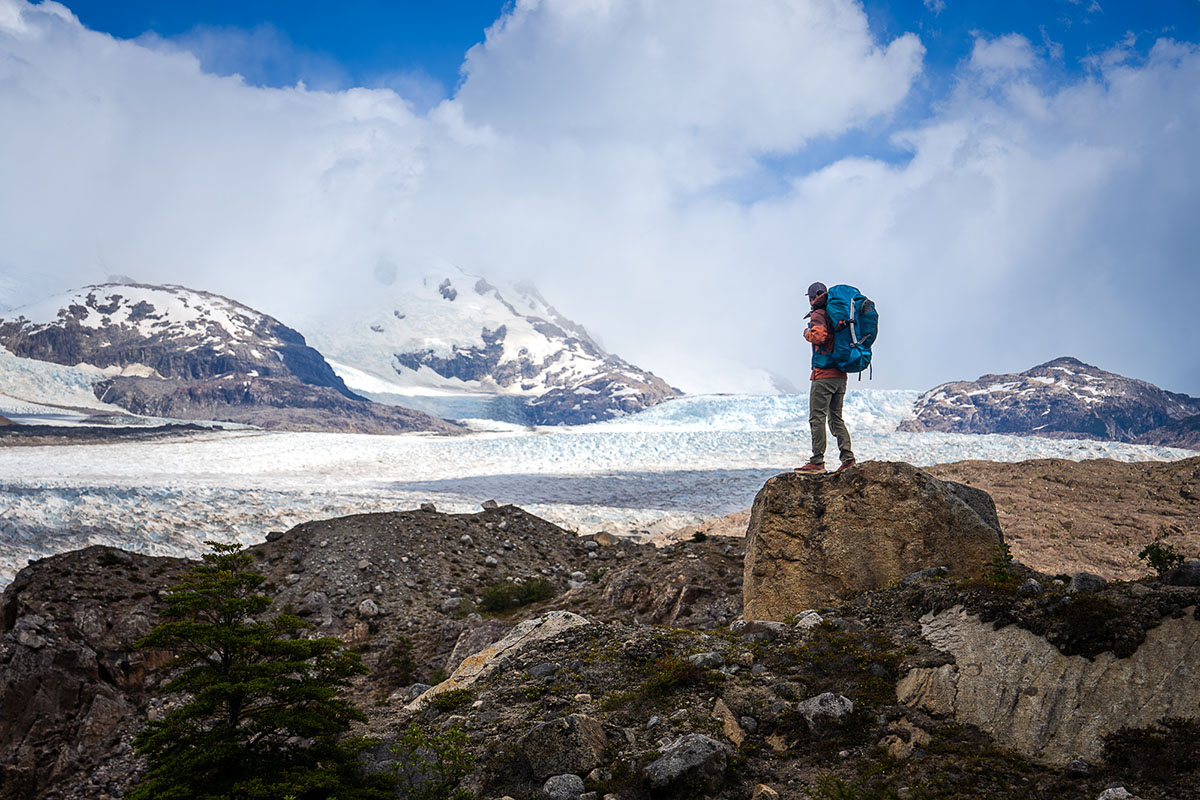
A final alternative to consider is Hoka’s own Kaha 2 Low GTX, which sits at the top of their hiking shoe lineup at $220. However, despite costing more, we weren’t very impressed by the latest design. Despite having a thick midsole, the Kaha’s dual-density foam is quite firm and far less plush than the Anacapa’s, and we found its fit to be big both length- and widthwise. The Kaha does get the edge in durability with less mesh and more nubuck leather, but it’s not enough to warrant the $40 price gap and 3-ounce weight penalty, in our opinion.
If you’re thinking about buying gear that we’ve reviewed on Switchback Travel, you can help support us in the process. Just click on any of the seller links above, and if you make a purchase, we receive a small percentage of the transaction. The cost of the product is the same to you but this helps us continue to test and write about outdoor gear. Thanks and we appreciate your support!
Depending on the seller, most products ship free in the United States on orders of $50 or more. International shipping availability and rates vary by seller. The pricing information on this page is updated hourly but we are not responsible for inaccuracies.